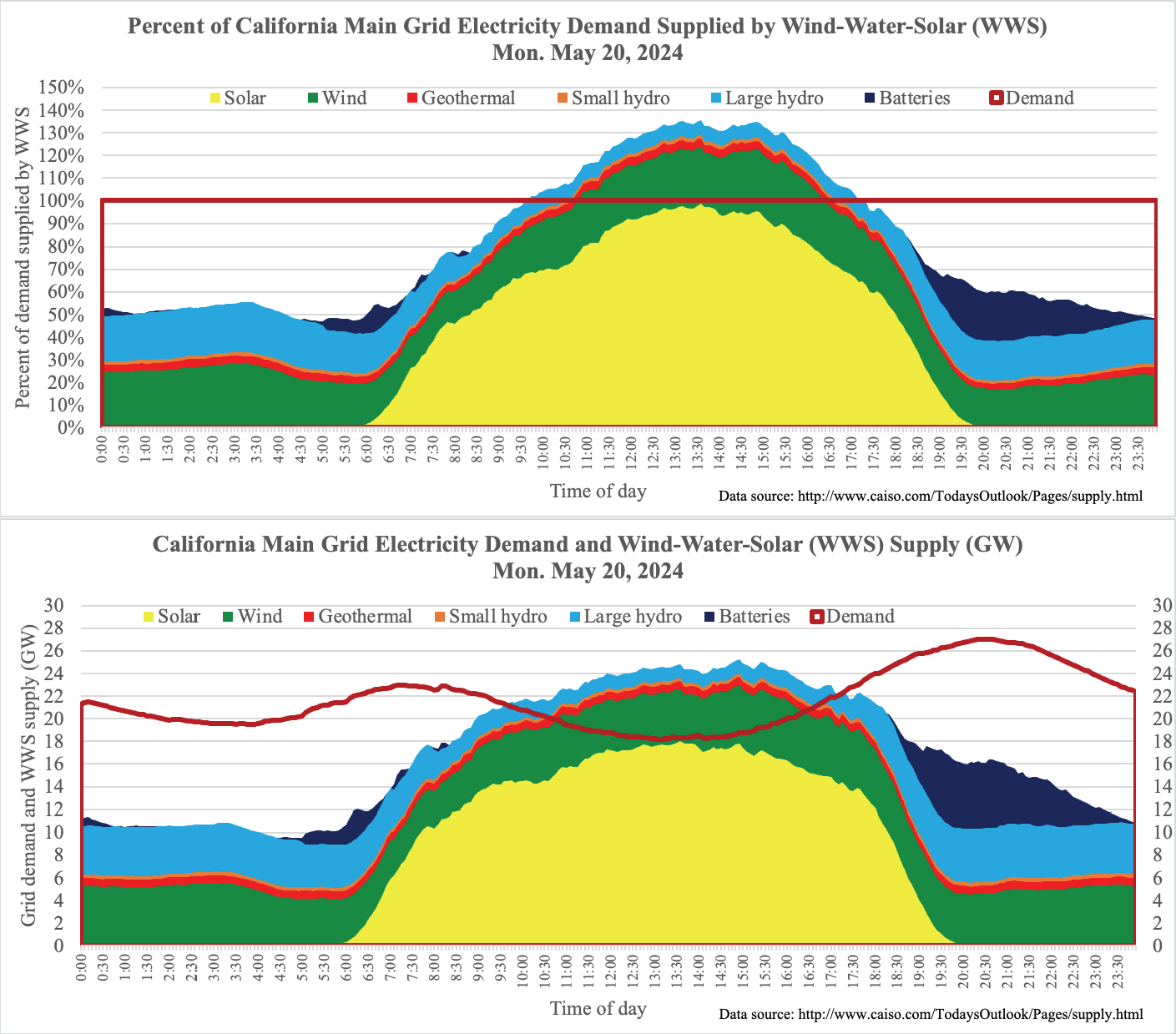California has been living on renewable energy for over a month, even selling excess energy to other states. According to Professor Mark Jacobson from Stanford University, since April 15, 2024, the state has been daily producing more electricity from renewable sources than it needs. In a social media post on May 21, Jacobson reported that for 45 consecutive days, the combined supply of solar, wind, and hydroelectric power exceeded demand.
These achievements are attributed to abundant rainfall, which has increased the productivity of hydroelectric power. Analysts warn against premature celebration, as future droughts are possible, and solar and wind energy alone may not fully meet demand. Jacobson noted that the surplus supply over demand occurs for 0.25 to 6 hours per day. Importantly, renewable sources have been providing excess energy generation daily throughout this period, something that had not been achieved for such an extended period before.

California boasts the world’s largest grid-connected battery energy storage system, operational since January 2024. These batteries charge during the day when solar energy surplus is high and discharge in the evening and at night, reducing methane usage. The state plans to further develop renewable energy infrastructure by launching 26 new projects, most of which are related to offshore wind farms. The total cost of these projects is $6.1 billion.
California legislation mandates a complete transition to renewable energy sources by 2045; however, Jacobson is confident that this goal will be achieved as early as 2035. The state continues to invest in new technologies and projects to accelerate this transition and ensure a stable electricity supply.











